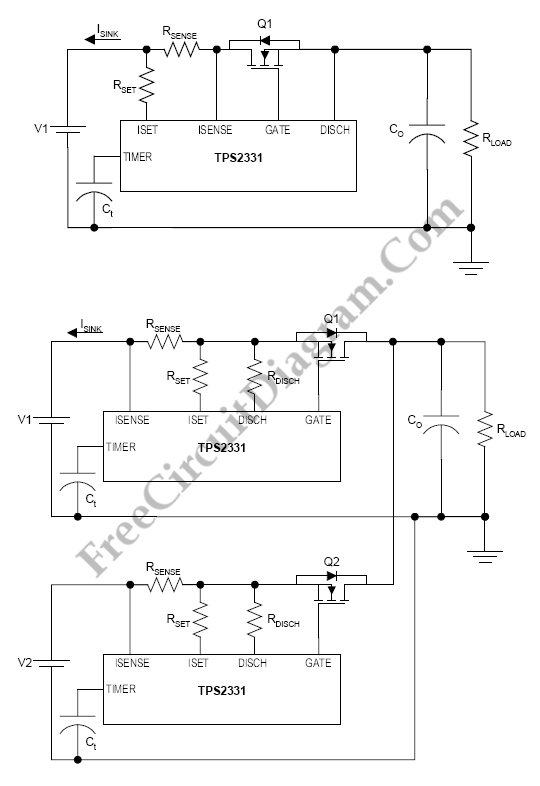TPS2331 Hot Swap Controller

The load inrush current is limited by the TPS2331. The system also protected by TPS2331 from a load fault in its traditional tole as a hot-swap controller. However, the TPS231 must protect the system against a power supply module fault in an OR-ing circuit. The TPS2331 is required by the former role to trip if excessive current flows into the load (i.e., Isink 0).
The figure above shows us the schematic diagram of TPS2331 hot-swap circuit. When the ISET pin voltage is greater than ISENSE pin voltage, the TPS2331 circuit breaker trips. The circuit breaker trip point is determined by the 50uA ISET pink sink-current and resistor Riset.
Itrip = (Riset/Rsense)50uA
The TPS2331 current sense connections is swapped by this circuit so the circuit breaker trips id excessive current flows into the power supply. The power-supply module output current is measured by TPS2331 to detect a fault. A power supply module that fails open circuit (e.g. blown input fuse) puts out no current. There is no need to turn off the FET because this failure doesn’t jeopardize power to the host. On the other hand, a power supply module that fails short circuit (e.g., a bad output rectifier, a bad output filter capacitor, or an over-voltage crowbar that trips) can jeopardize power to the host. The excessive reverse current can be detected by the TPS2331 and quickly turn off the FET to isolate the fault from the system.
The FET drain and source connections are reversed on this figure 2 circuit to prevent a bad power supply module from sinking current through the body diode when the FET is off. If the TPS2331 circuit breaker trips, the DISCH pin (pin 14) pulls low. The DISCH pin current is limited by Resistor DISCH should the power supply output recover. [Source: Texas Instruments Application Report]